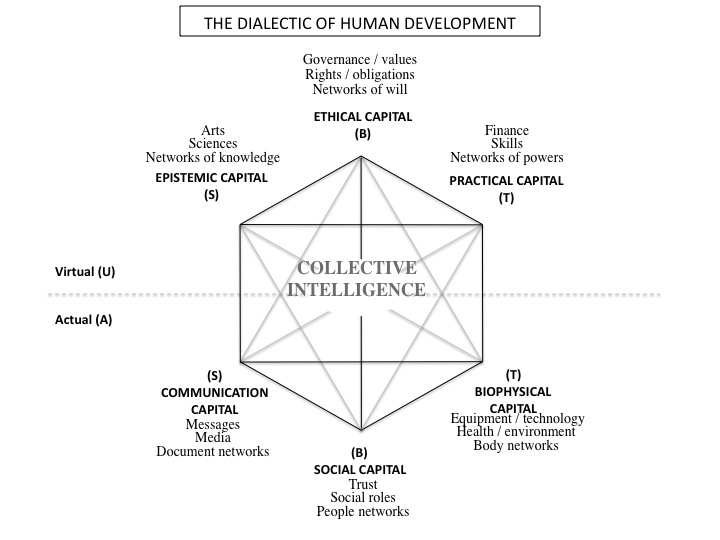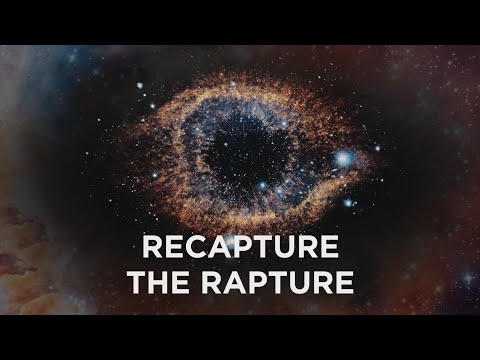We all know the problems with global capitalism. Fiat money is created, and it finds its way to wealthy investors, who extract large middle-man profits from both producers and consumers, simply because they have enough upfront cash to invest. We have monetised all the wealth of our planet and served it up to the top 1%, who extract their profits from the system and hoard them in Swiss Bank accounts, or massive tracts of lush farmland, or super yachts etc.
Consumers are of course also to blame, as we rapaciously consume ever more global goods and services, feeding the capitalist machine, whilst becoming ever more fragile and dependent on governments and global corporates for our every need.
Crypto currencies have not solved this problem. In many cases, PoW and PoS make it worse, either through significant power utilisation, or by compounding the investor problem where only the wealthy get to stake their wealth, to earn more of it.
FLOW is a new tool and value-marker, representing all the capitals that are taken for granted and leveraged for free at the moment. FLOW represents the wealth that current financial capital does not, including:
- Natural Capital - (renewable and non-renewable) - the wealth of trees, plants, animals, fresh water, soil, clean air, minerals remaining in the ground…
- Spiritual / Elders Capital - the experiential and spiritual wealth of our elders, our sages…
- Human Capital - the wealth of our bodies and minds… to do work, to create works of wonder…
- Community Capital - the wealth of our social networks and communities
FLOW is not meant to be just another tool to monetise a new currency and carve up value yet again. It is purposefully fuzzy in the interaction of all the capitals, although of course in practise it will likely be recorded quantitatively against the USD, at least in the beginning.
In the ongoing normal distribution of Nature’s complexity, the underperformers are cut back, whilst the overachievers go on to create new evolutionary species. Nature rewards symbiotic species with resources and withholds resources from non-symbiotic species. Modern society is non-symbiotic, and Mother Earth is dealing with us accordingly. FLOW is an attempt to become symbiotic once more.
Some concept rules are necessary to understand the thinking behind FLOW, which in some ways is similar to HOLOFUEL itself.
- Any entity can have FLOW (individual, company etc.), and their running balance can be either positive or negative, fluctuating over time.
- FLOW can be acquired through purchasing it with fiat, earning it by selling a product or service designated in FLOW or receiving it via gift / donation etc.
- FLOW is reduced by taking out a loan designated in FLOW, or spending it on products and services, or gifting it to someone.
At its core, FLOW represents “Proof of Production” of one of the capitals mentioned above. As a P2P tool it facilitates direct investment in earth regenerative projects, that ultimately prove production arising from one of these capitals.
Simple worked example
Assume that there is a community in the US who want to start steward their land to produce regenerative crops. They should be able to put together a business plan and place it on the FLOW platform for the FLOW Decentralised Autonomous Community (“DAC”) to rate their proposal. They may be asking for $10,000 to buy seeds and equipment to get started.
Assume that the FLOW “credit limit” for any entity is 10,000 i.e., the regenerative community is thus allowed to go “short” FLOW with a -10,000 FLOW balance. Now we need to find P2P investors who will hold the corresponding +10,000 “long” balance. Ignoring for now that the USD:FLOW rate can fluctuate, let’s assume there are 10 people each willing to buy 1,000 USD of FLOW. Thus, $10,000 is effectively raised through what is essentially a crowd-funding approach, with crowd investors each holding +1,000 FLOW.
Note that the investment is essentially in FLOW, and not in the project itself i.e., the investment risk does not sit with the project, and investors are only left with the price risk of FLOW going forward.
The community now receives their $10,000 and goes on to produce their harvest. If they are financially savvy, they will price their crops in FLOW, because any fluctuation in the USD:FLOW rate will expose them to price risk as they seek to settle their “debt” of -10,000 FLOW. Of course, they could turn out to be a bad investment, either through taking the money and running, or perhaps their harvest failed, or some other reason.
Each entity active in the DAC will have a track record of how it performs using FLOW and this will obviously inform future decisions of the FLOW DAC. If one gets a bad credit record, no-one is going to back them any further. It is unlikely that many would want to kill this golden goose i.e., interest free loans or even potentially people gifting FLOW to help clear negative balances etc.
Let us assume that the regenerative community does succeed and produces a harvest, which they sell in FLOW. However, assume that the initial investors are all based in China, and they cannot purchase the harvest with their positive FLOW, or that they might be local but prefer to hold onto their FLOW for now as a speculative investment.
This will now require new FLOW to be purchased on the DAC, as local US consumers purchase FLOW with USD to pay for the harvest. This new FLOW will find its way to a new earth regenerative project, who will subsequently hold their equivalent negative balance. Note that there is likely to also be a profit margin involved when the regenerative community produces its harvest. This profit margin would likely come from Natural Capital (the bounty of nature as non-GMO seeds produce greater quantities ever year) and Human Capital (the sweat of the community).
Thus, the new FLOW to be created will likely be larger than the previous FLOW, say 12,000 FLOW representing a 20% profit margin. This is Proof of Production. Let us look at the flows….
EDIT: FOR SOME REASON I CANNOT INSERT A PICTURE HERE DESCRIBING THE CASHFLOWS
There is no need for an inflation setting here. New FLOW is only created as products and services are produced at a profit, so there can be no price inflation. However, if the initial FLOW is NOT paid back, then the initial investors are sitting on an investment that lacks new buyers for FLOW i.e., the original USD investment will be destroyed as market price falls.
Note that an interesting dynamic emerges here. Voters on which projects to invest in should be made up of all those holding positive FLOW in the DAC. Ideally, they would prefer for new investors to purchase FLOW in the market to spend on projects repaying their negative loans, rather than investing in new projects. That is, purchasing goods and services from existing projects drives up the market price for FLOW, allowing HODL’ers to eventually sell at a profit.
But new projects also eventually create an even bigger pool of buyers, thus creating even more demand in due course for FLOW. Failed projects mean no new buyers at all. Thus, voters for investable projects will most likely exercise significant due diligence.
ESG / Impact Investing
Previously we have looked at individuals crowd-funding projects and receiving FLOW, which will float in price on the open market. There is another group of buyers that may be incentivised to purchase FLOW, not necessarily for market returns, but because they wish to back ESG or Impact Investments.
This could prove quite attractive to corporates who can then publish their FLOW balances, along with their selected projects, in their annual sustainability reports. Once again, project risk is reduced as the value of the investment sits in the overall market value of FLOW at any point in time. Thus, FLOW essentially becomes a proxy for impact investing, or the approximate fuzzy value of the four Capitals mentioned earlier.
FLOW Launch Use Case
I am currently engaged with the coal mining community in South Africa, to create new green revenue streams in local communities as coal mines shut down and rehabilitate their operations. This is the case around the world, including the USA.
FLOW will work superbly in this case i.e., the mining company purchases FLOW by investing fiat currency in several local regenerative enterprises in and around the mining area e.g., composting operations, renewable energy projects, agri-processing initiatives etc. As FLOW becomes more widely accepted, FLOW holders will find more value, whilst in the meantime it can be used as a local currency to track the success of such ESG investments.
How does the DAC fund its operating costs?
The idea behind FLOW is to create a useful non-profit platform, and not to sell community member’s data or eyeballs to the highest bidder. Thus, the DAC itself can request donations / gifts from the community in either USD or FLOW, to fund ongoing operations.
Another possibility to be explored is to charge transaction fees to projects that successfully raise funding via the platform. Great care would need to be taken to ensure that the DAC does not need to be financially regulated i.e., the platform itself is not holding investor money, only facilitating funding to flow from investors to projects. This is the crowd-funding revenue approach, although as a non-profit entity, one would like to see any excess profits returned to the community as dividends.
That about sums up my proposal. So what do we need to proceed?
- Holochain devs
- Full stack web devs, although I could handle much of this
- Financial partners, on the understanding that this is intended as a non-profit - although I could probably bootstrap this with my current connections
- Marketing and business development partners, to get the message out
As mentioned, I pretty much have the first use-case to start with, which means a potential pool of buyers already. This proposal is also very simple and there are plenty of details that I have mostly also ironed out already, as part of the full business plan.
Very keen to get the community’s feedback on this, and whether anyone is interested to come along for the ride. I can’t promise you fortune and fame but I honestly believe that we can change the world for the better with this.

 PDA is an Autistic Spectrum Disorder which I have/am, as well as ADHD so I’m pretty direct in my observations, it’s just the way I am. I mentioned previously I was looking forward to our discussions, so let’s begin…
PDA is an Autistic Spectrum Disorder which I have/am, as well as ADHD so I’m pretty direct in my observations, it’s just the way I am. I mentioned previously I was looking forward to our discussions, so let’s begin…
 I also enjoy the fact that this blog is called “Flow”.
I also enjoy the fact that this blog is called “Flow”.